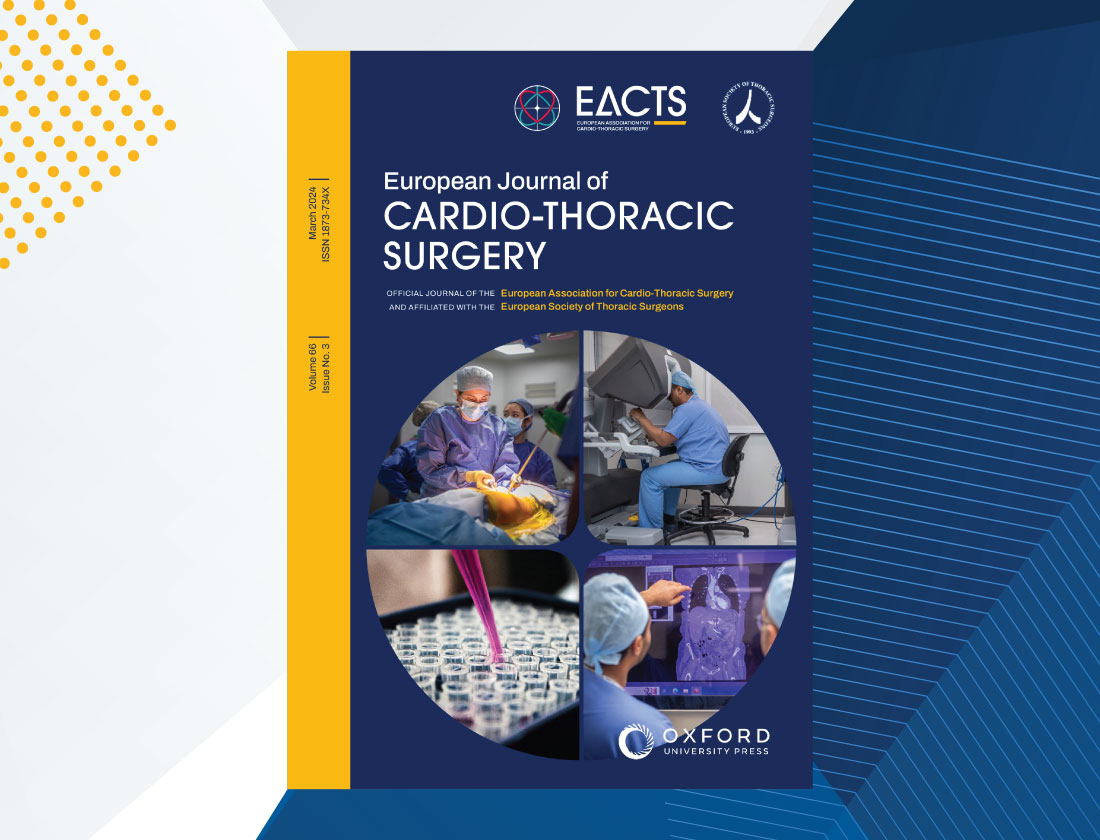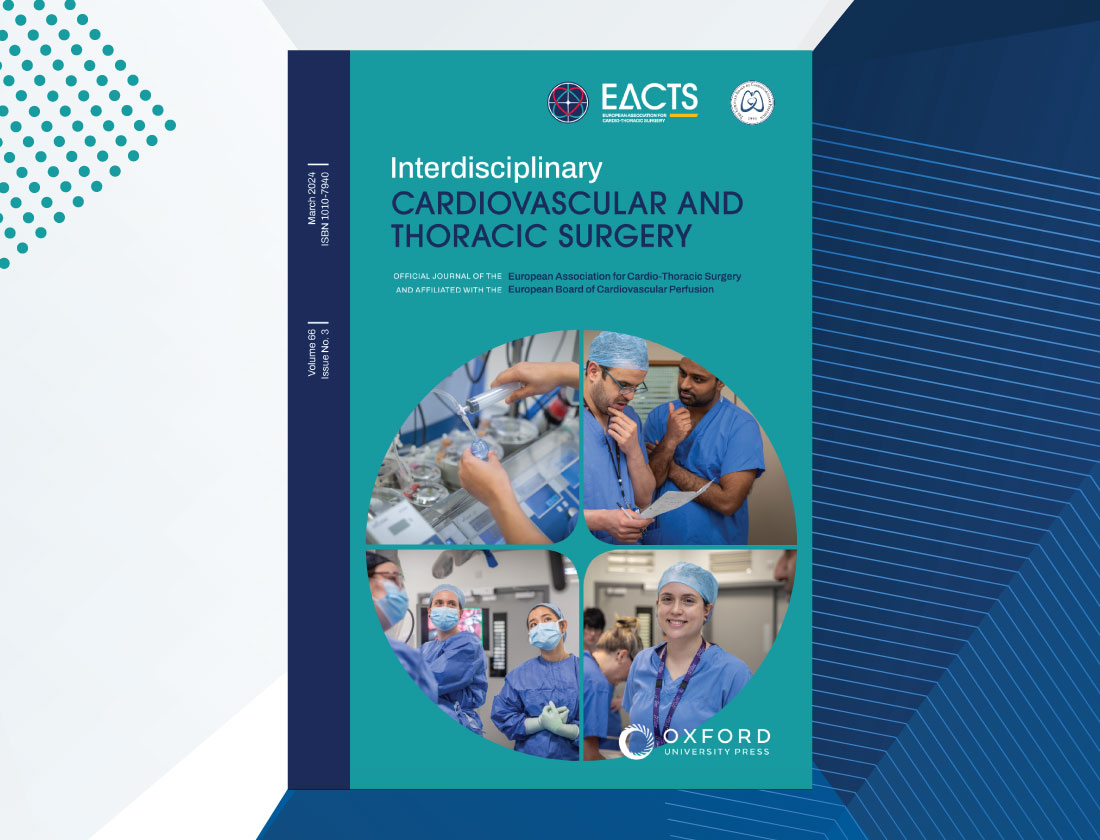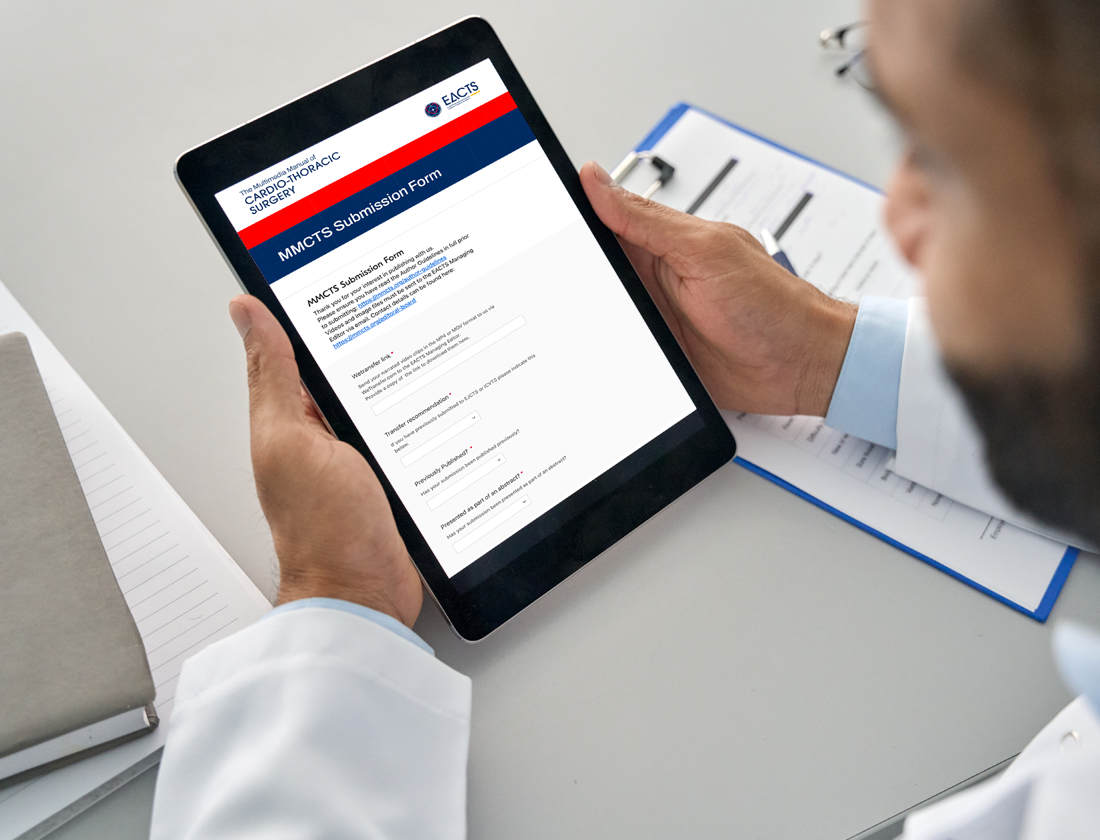Tutorial
Lung resections combined with vena cava replacement
Resection and reconstruction of the superior vena cava in patients with lung cancer is still considered a surgical challenge; the numerous problems related to patient selection, the choice of the most appropriate surgical strategy and technique, the most suitable material for replacement, and the number of potential complications definitively show an impact on short-term outcome and long-term prognosis. However, with the appropriate indications and surgical technique, a clear benefit has been documented in a select group of patients with lung cancer.
Resection and reconstruction of the superior vena cava (SVC) is still considered a challenging surgical procedure due to the controversial and heterogeneous surgical strategy, patient selection and the need for a correct selection of the most suitable material for replacement. The operative strategy should always be discussed with the anesthesiologist to optimize the approach since the potential intra- and postoperative complications have an impact on the outcome. However, with the appropriate indications and surgical technique, a clear benefit has been documented in a well-selected group of patients .
The anatomy of the region where the venous system created by the SVC and left brachiocephalic vein (Schematic 1) is located put these vascular structures at risk for invasion by both mediastinal and lung tumors. In particular, lung cancer arising in the right upper lobe is the most frequent indication for SVC resection and reconstruction.

Lung cancer may directly invade the SVC (Photo 1), but also metastatic lymph nodes within the mediastinum may be involved (stations R2, R4 and 3) (Photo 2).


Other indications for SVC resection and reconstruction are primary mediastinal tumors and, more rarely, primary SVC tumors, saccular aneurysms, primary malformations, and traumatic injuries.
From the clinical point of view, contraindications for surgical resection and replacement include the presence of SVC syndrome related to obviously unresectable tumors, a completely obstructed SVC with rich collateral vein circulation, and abnormal walls of the proximal vein/s (tumor-free margins for performing the anastomosis; particular attention should be paid in patients undergoing induction chemo–radiotherapy).
When lung cancer is the indication for surgery the preoperative work-up should always include total body CT scan along with other specific investigations. Superior vena cavography is usually performed in all patients when invasion of the vessel is suspected (Photo 3); here magnetic resonance reconstruction certainly helps to better define the site and extension of the infiltration and the presence of thrombosis; it also contributes to revealing the presence of any anatomical variation of the SVC system.

Echocardiography should be routinely included in the preoperative work-up to assess cardiac performance and to rule out the potential extension of a thrombus into the right atrium. Brain CT with contrast injection is usually performed for staging purposes but it also helps to diagnose any brain disease that may be exacerbated by central nervous system edema during SVC clamping. A careful functional evaluation should always be performed (PFTs and arterial blood gas analysis) since SVC reconstruction may be associated with any type of parenchymal resection, including standard or intrapericardial pneumonectomy and pneumonectomy with carinal resection.
Operative Strategy
Surgical approach
A right thoracotomy in the 4th or 5th intercostal space is the standard approach for upper lobe tumors invading the SVC; it allows optimal exposure of the operative field with an easy access to the lung parenchyma, the SVC and azygos vein, the trachea, the pulmonary hilum and the right atrium. However, through this approach it may be more difficult to control the left brachiocephalic vein.
Intraoperative management
Resection and reconstruction of the SVC is considered a major technical challenge due to the potential detrimental effects of clamping a patent vessel [3]. Partial caval clamping or clamping of a chronically obstructed SVC is generally well tolerated; on the other hand, occlusion of a patent SVC may produce intracranial bleeding, brain edema and damage, and a potentially lethal reduction of cardiac output. Careful patient selection and accurate intraoperative monitoring and management certainly contribute to avoiding these complications.
A double lumen endotracheal tube is placed to achieve one lung ventilation. A radial arterial line and a venous line in the jugular vein are routinely inserted to obtain continuous pressure monitoring. Two additional venous lines are placed in the lower limbs to achieve volume expansion during venous clamping.
A Foley catheter is inserted to monitor urine output. EKG monitoring is obviously mandatory. Transesophageal echo is optional as well as nasogastric tube placement; the latter may be of great help as an anatomical marker during dissection of the posterior aspect of the mediastinum.
Closure of up to 50% of the SVC circumference can be performed without any hemodynamic imbalance. In patients with tight or complete obstruction of the vessel, venous clamping does not significantly modify cerebral circulation and cardiac output. In both cases, the duration of venous clamping is not a limiting factor and the operation can be safely performed without feeling stressed by the potential length of the reconstruction.
On the contrary, during complete clamping of an unobstructed SVC, there is a clear hemodynamic derangement, with an increase in the mean venous pressure in the cephalic districts, and a decrease in mean arterial pressure with a consequently reduced brain arterial–venous gradient. This may lead to brain edema, hemorrhage, and dysfunction (usually transient). These hemodynamic modifications are evident in the entire cephalic area. For this reason, patients usually present cyanotic facies during SVC clamping; however, this situation is usually completely reversible after declamping. Petechia may be evident in the immediate postoperative period but will disappear within one to two weeks after surgery.
The hemodynamic imbalance is reduced with aggressive intraoperative management by the anesthesiologist, along with some technical tricks.
● Fluid implementation and pharmacological agents: This strategy is intended to increase venous return and maintain the normal arterial–venous gradient in the brain. Macromolecules, blood, and plasma should be used. Vasoconstrictive agents are indicated to increase the mean arterial pressure. At the end of the procedure, diuretics are usually administered to reduce edema in the cephalic areas. Anticoagulation therapy is mandatory during and immediately after the operation: intravenous sodium heparin (0.5 mg/kg) is given before clamping the SVC and it is continued during the immediate postoperative period (adjust heparin dose to achieve INR=2/2.5). It is usually switched to warfarin agents at the time of discharge.
● Surgical strategy and shunting techniques: Every effort should be made to reduce clamping time as much as possible, in particular when the SVC system is not completely occluded before the operation. It has been reported that up to 45–60 min of complete clamping is usually well tolerated with the administration of the appropriate pharmacological support. In the case of lung cancer invading the SVC, the vascular step should always be performed before any other reconstructive procedure of the airway: it is extremely important to avoid contamination of the vascular surgical field. The SVC and tracheal suture lines should always be separated by interposing a pedicle graft (intercostal muscle, thymus, pericardial flap). Intravascular (Schematic 2) or extravascular shunts (Schematic 3 and Photo 4) may be used to reduce the effects of vascular clamping during resection and reconstruction of the SVC [4]. However, thrombosis of the shunt may occur; furthermore, these devices occupy space in the operative field making the anastomosis more difficult.




1 – Modelling pericardium on a 5 cc syringe (0:00)
Tangential resection and venous plasty
In cases in which less than 30% of the SVC circumference is involved a partial resection of the vessel can be performed: a tangential resection with closure of the defect by a running suture or a vascular stapler is usually easily performed and leaves the vessel well patent (Schematic 4). Larger defects require reconstruction with the interposition of a patch of autologous or bovine pericardium (Schematic 5). Autologous pericardium may be fixed in diluted glutaraldehyde (2 drops of 20% glutaraldehyde in 50 ml of saline) for one minute to let it stiffen and facilitate manipulation during suturing.
Schematic 4: Tangential resection of the superior vena cava with direct suture. 
Schematic 5: Reconstruction of the superior vena cava with a patch of autologous pericardium. SVC replacement
Replacement of the whole body of the SVC is the most frequent type of reconstruction (Photo 5). In patients with lung cancer it is usually associated with right upper lobectomy or pneumonectomy; however, SVC reconstruction may be required during carinal pneumonectomy, sleeve lobectomy (Photos 6 and 7) and reconstructive procedures of the pulmonary artery ; the latter two should always be attempted if they help to avoid pneumonectomy. SVC replacement requires a tumor-free confluence of both brachiocephalic veins. The reconstruction is usually performed using a straight PTFE graft (18–20 mm) (Photo 5). An autologous (Video 1) or bovine pericardial tube could also be used (Photos 8 and 9).
Photo 5: Reconstruction of the superior vena cava with a PTFE graft. 
Photo 6: Reconstruction of the superior vena cava with a patch of autologous pericardium associated to a right upper sleeve lobectomy. 
Photo 7: Operative specimen after right upper sleeve lobectomy and resection of the lateral wall of the SVC. 
Photo 8: Reconstruction of the superior vena cava with a tube of bovine pericardium. 
Photo 9: Construction of the tube of bovine pericardium over a 10-ml syringe. 
2 – Clamping the SVC (0:36)
The SVC is clamped proximally and distally to the site of infiltration and is removed together with the tumor.
Usually we do not need to dissect too much of the SVC and the two brachiocephalic veins on the side of the proximal anastomosis; only enough space to clamp the vessel and perform the anastomosis is required. Excessive mobilization could favor twisting and stenosis of the proximal suture line.

3 – Anastomoses: Proximal then distal (1:12)
The proximal anastomosis is performed first (Video 3), using a 5-0 polypropylene suture, starting from the posterior aspect of the prosthesis or the tube of pericardium. Attention is paid to avoid tension on the anastomosis or torsion of the axis of the vein.
The distal anastomosis is subsequently performed with the same technique; it is usually performed on the distal stump of the SVC, but in selected cases it could be required to place it on the right atrium. However, the auricle should always be avoided because of the presence of the pectinate muscles. Before tying the distal suture line the proximal clamp is gently released and deaeration is performed; afterwards, the distal clamp is released and knots are tied. After complete filling of the graft by blood there should be no tension on the suture lines, or torsion, or kinking.
Palliative bypass
The indications for palliative procedures of bypass are extremely rare due to the low venous blood flow obtained from the axillary or jugular veins. Surgically created A–V fistulae intended to increase flow through the bypass conduit are generally unsuccessful.
A number of potential complications may be associated with resection and reconstruction of the SVC. Both early and late complications may occur. It is a low-pressure system, thus, potential thrombosis can always appear, especially when prosthetic material is employed. Anastomotic stenosis may occur both at the level of the proximal and distal suture lines. Early diagnosis is extremely important and certainly the clinical status of the patient may help; however, this complication may also occur without immediate clinical signs; the onset of symptoms related to stenosis may appear only when a clot further reduces the lumen of the vessel. For this reason, a postoperative angiogram or MRI should always be performed before discharge. Proximal kinking is the most frequent cause of stenosis; this may be due to excessive dissection and mobilization or to the excessive length of the graft. Management of this complication includes surgical correction in the early postoperative period and dilatation and stenting when it is diagnosed later.
Other potential complications are graft thrombosis and infection. The former usually occurs early after the operation and may cause acute SVC syndrome. Graft infection is a serious complication and occurs more frequently when the vascular reconstruction is associated with major airway surgery and pneumonectomy. Conservative management of this complication is possible when the patient is not septic. In case of septicemia the graft should be removed, possibly after progressive clamping of the prosthesis through an open window, as described by other authors .
Operative mortality should be between 5% and 10% . The survival rate after radical resection in patients with lung cancer invading the SVC is approximately 30% at 5 years . Patients with N2 lung cancer (in particular when it remains stable or progresses after induction chemotherapy) are not ideal candidates from the oncological point of view since almost no long term survivors are among this population. The potential role of induction chemotherapy in T4 tumors invading the SVC is still to be defined since no prospective trials have been reported. Also, incomplete resection should be considered as a negative prognostic factor.
- Dartevelle PG, Chapelier AR, Pastorino U, Corbi P, Lenot B, Cerrina J, et al. Long term follow-up after prosthetic replacement of the superior vena cava combined with resection of mediastinal – pulmonary malignant tumors. J Thorac Cardiovasc Surg 1991;102:259–265.
PubMed Abstract - Tsuchiya R, Asamura H, Kondo H, Goya T, Naruke T. Extended resection of the left atrium, great vessels or both for lung cancer. Ann Thorac Surg 1994;57:960–965.
PubMed Abstract | Publisher Full Text - Gonzalez-Fajardo JA, Garcia-Yuste M, Florez S, Ramos G, Alvarez T, Coca JM. Hemodynamic and cerebral repercussions arising from surgical interruption of the superior vena cava. Experimental model. J Thorac Cardiovasc Surg 1994;107:1044–1049.
PubMed Abstract - Piccione W, Faber P, Warren W. Superior vena caval reconstruction using autologous pericardium. Ann Thorac Surg 1990;50:417–419.
PubMed Abstract | Publisher Full Text - Solli P, Spaggiari L, Grasso F, Pastorino U. Double prosthetic replacement of pulmonary artery and superior vena cava and sleeve lobectomy for lung cancer. Eur J Cardiothorac Surg 2001;20:1045–1048.
PubMed Abstract | EJCTS Full Text - Dartevelle P, Macchiarini P, Chapelier A. Technique of superior vena cava resection and reconstruction. Chest Surg Clin N Am 1995;5:345–358.
PubMed Abstract - Rendina EA, Venuta F, De Giacomo T, Ciccone AM, Ruvolo G, Coloni GF, et al. Induction chemotherapy for T4 centrally located non small cell lung cancer. J Thorac Cardiovasc Surg 1999;117:225–233.
PubMed Abstract | Publisher Full Text
This tutorial was originally published by EACTS with Oxford University Press and has been adapted to fit our new MMCTS templates.
Author
Federico Venuta, Erino Angelo Rendina, and Giorgio Furio Coloni
Author Affiliations
Department of Thoracic Surgery, University of Rome ‘‘La Sapienza’’, Policlinico Umberto I.
Cattedra di Chirurgia Toracica. V.le del Policlinico, 00100 Rome, Italy
Corresponding Author
Federico Venuta
Department of Thoracic Surgery, University of Rome ‘‘La Sapienza’’, Policlinico Umberto I.
Cattedra di Chirurgia Toracica. V.le del Policlinico, 00100 Rome, Italy
Fax: +39-06-4997 0735
Email: sofed@libero.it
Keywords
© The Author 2004. Published by MMCTS on behalf of the European Association for Cardio-Thoracic Surgery. All rights reserved.
You may also like
Video atlas of pulmonary segmentectomy: robotic-assisted right S1 segmentectomy with 3-dimensional imaging
Preoperative three-dimensional reconstruction imaging enables anatomical assessment of a tumour and the surrounding vasculature, allowing for precise surgical mapping and improved intraoperative orientation—to enhance preoperative planning, reduce postoperative morbidity, shorten hospital stay and hasten postoperative recovery.





